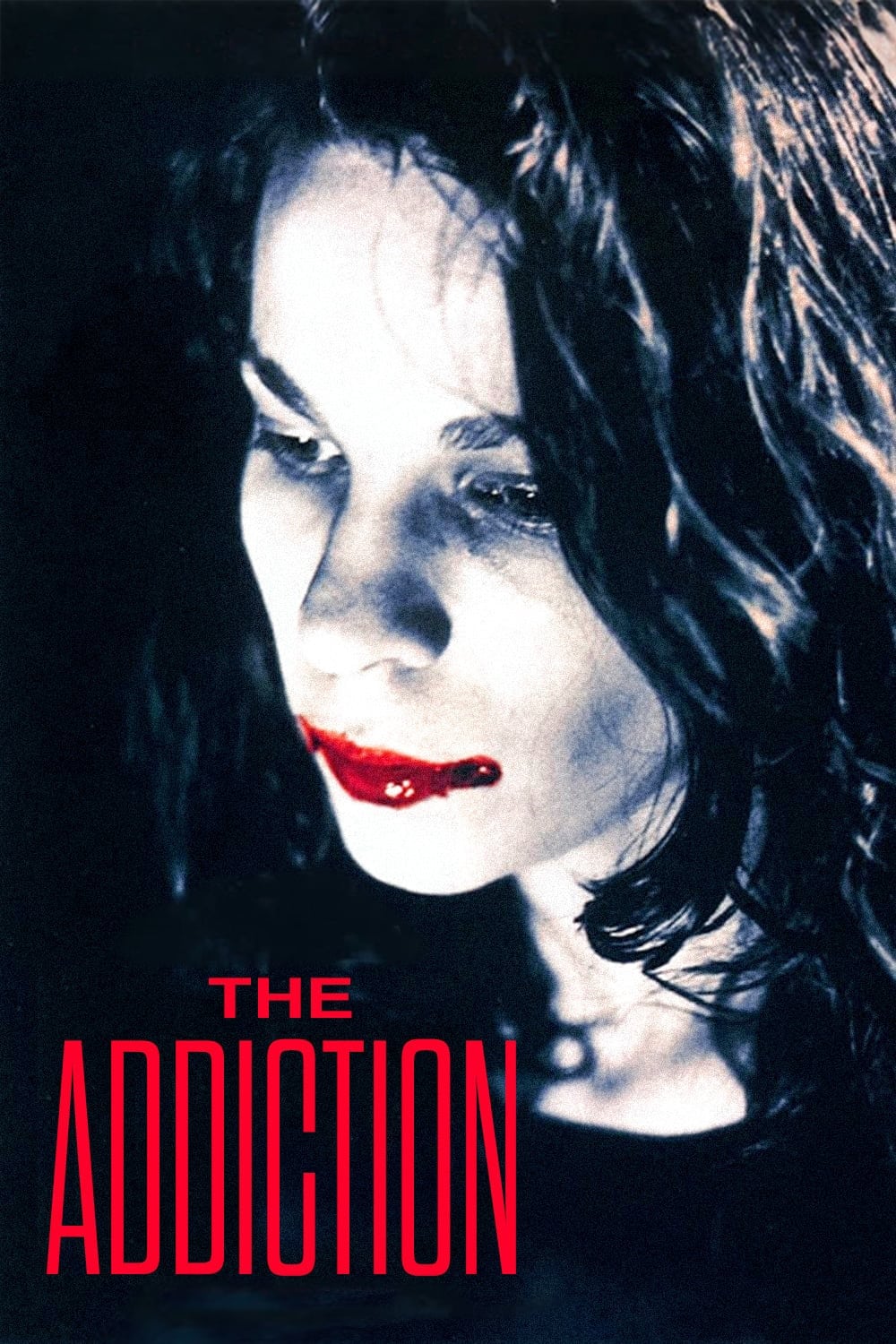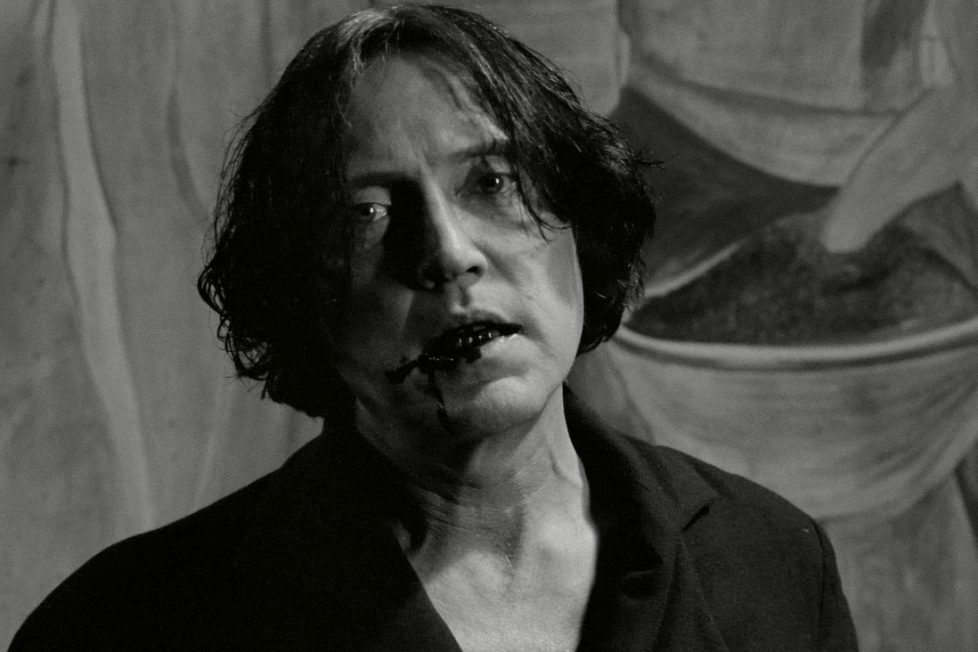Abel Ferrara’s sophisticated depictions of horror cliches have always been admired. The more the audience ponders the ideas, the more value they will derive. Imagine turning the blood-sucking vampire cliché into a symbol for something much bigger. What could it possibly be? Vampires have long been a symbol of human aspirations taken to their logical conclusion.
Whether it is the desire to be immortal or the justification of immoral deeds under the guise of insatiable lust or, in this case, bloodlust. But how much further can Ferrara push the audience to see? While his earlier films, such as ‘Bad Lieutenant’ and ‘The Funeral,’ were well-received, the one we are talking about today was not.
‘The Addiction’ is a film that uses vampires as a vehicle to portray Ferrara’s viewpoint on a variety of topics. Continue reading to find out what he manages to convey with this delicate yet horrific portrayal. And who knows what might happen? It is possible that Christopher Walken himself will appear in this picture.
The Dark Is Their Sunlight – The Addiction (1995)

Kathleen, often referred to as Kathy, is a postgraduate student pursuing philosophy. Her friend Jean and she are required to see tapes of war and wide-scale killings and draw out philosophical inferences from them for the sake of their dissertations.
They both are sitting and watching such old war footage wherein a single individual had been punished for being the puppet who pulled the trigger but not those who pull the strings. Right away, this first scene sets the tone for the film wherein Ferrara has begun planting seeds of doubt and needs to question authority structures and even morals.
Right after, the two friends part ways to go home when Kathy is pushed against the wall by a well-dressed lady who asks Kathy to tell her to stop as she means it. Kathy is unable to do so and this lady, who is played by actor Annabella Sciorra, proceeds to bite her neck and suck her blood. Kathleen is left dumbfounded and in pain.
She is taken to the hospital for aid where she is told she’s lucky she’s alive by a snarky policeman. These small biting comments showcase how society treats its victims without an ounce of sympathy.
Post this incident, Kathy realizes that she now craves blood herself. Unable to restrain herself she carries a syringe to draw blood from an unconscious homeless man. Once, this blood is injected into her system, there is almost no coming back. Her reflection fades from the mirror and she begins wearing sunglasses during the day. Her worldview begins to shift during this period of ugly metamorphosis.
Kathy then even manages to seduce her philosophy professor and bring him home. Thereby converting him into a vampire as well. Her friend Jean begins to notice changes in her appearance and asks if she is unwell. Kathy does not answer her properly and leaves for the library. Here, she encounters another one of her victims who she befriends.
This young girl unwittingly invites Kathy over resulting in her being bitten as well. By this point, Kathy has given up the syringe. This shift is also one that is important as we will discuss later. Later, Kathy engages in a conversation with Jean wherein she asks her about the nature of guilt and sin. She rambles on about how humans have been immoral since the beginning of time and they will carry forth this guilt to the future as well.
After this rambling conversation, Kathy who has up to this point abstained from harming Jean bites her as well. She says her signature comment and asks Jean to tell her to stop as she means it. Jean is unable to produce the words and simply says ‘Please, Let go’ instead. This asking of consent in a warped way possibly portrayed the draw of evil. That even in the face of harm, people were unable to refuse with conviction.
Kathy approaches a man at night who himself says ‘why don’t you tell me to leave you alone as you mean it’ which are words similar to what Kathy says to her victims. Kathy smiles recognizing him as one of them. This man goes by Peina who is played by none other than Christopher Walken. Walken invites Kathy home and tells her that he is a 40-year-old vampire. He has managed to control his desires by fasting and can blend into society.
He differentiates between Kathy and himself saying she knows nothing. He tells her he will show her what hunger really means. The scene shifts to Peina leisurely walking into his house as Kathy lies bleeding on the bed as she has been bitten. He tells her that she is a slave to her desire unlike him who has to restrain. He goes on to quote big philosophers like Burroughs as Kathy writhes in pain.
Kathy manages to escape Peina’s house and is by this point desperate for blood. She falls to the ground upon being unable to find someone. When a man who spots her approaches her to help, she immediately attacks him. Here, she does not even give him the option to ask her to stop. Her ‘disease’ and desperation can be seen to be taking over her entirely.
Soon, Kathy manages to finish her dissertation by presenting her cynical worldview as part of it. She gets a doctorate and after the ceremony, she invites her dean to a small party she is throwing for herself.
This party soon devolves into a blood fest wherein all vampires begin attacking all people present with no restraint. Kathy feeds on numerous people and all her victims who have now turned into perpetrators are doing the same. The first vampire played by Sciorra is also present at this party. This gruesome bloodbath ends with Kathy throwing up blood. She leaves to go outside where she collapses.
Kathy gains consciousness in a hospital and cries in her hospital bed. She asks the nurse to open the blinders during the day. This is her attempt to kill herself but is stopped by Sciorra’s character. She quotes Dante and says ‘It’s not that easy’ continues to expand on the philosophy of sin and humans.
The movie ends with Kathy seeking forgiveness from God as a priest comes to speak to her in her hospital bed. The last scene is one of Kathy walking up to her own grave in broad daylight leaving the viewers to interpret her death or rebirth as a human. She concludes by saying ‘self-revelation is the annihilation of self.
Blood Sucking Vampire

Ferrara’s blood-sucking and philosophy spouting vampires present an allegory of addiction. It is a portrayal that is intricate and nuanced. We can see this by the way in which the movie progresses. The inability of victims to deny consent due to the lure of evil showcases how it is difficult to refuse drugs.
Moreover, initially, Kathy uses syringes and exercises some restraint which little by little is lost. The same trajectory can be observed in drug users. The desperation of needing a fix when dependent on the drug is highlighted by Kathy upon leaving Peina’s house to attack the first passer-by. Peina’s exploration of being a slave to one’s desire as well as the need to control and exercise willpower indicates the tight rope all addicts have to walk across daily to avoid a relapse. The final scene of the bloodfest can be seen as a drug overdose followed by guilt as expressed by Kathy in the hospital.
Ferrara’s well-dressed and well-spoken vampires also presented the victim turned perpetrator trope. It explores the ideology of ‘hurt people hurt people. Moreover, vampires have always been portrayed as charismatic yet pretentious know-it-alls. This film simply pushes this to the extreme by allowing its vampires to indulge and converse in philosophical theories.
Why Should You Watch The Addiction?

‘The Addiction’ is an unsettling story that can be enjoyed on two levels. First, as the story of vampires and second as an allegory for addiction. While a student of philosophy might derive more pleasure from the script and mention of famous philosophers yet other viewers can enjoy the film regardless.
The cynicism about the world and themes such as religion, guilt, and repentance are all wonderfully explored in the film. Ferrara provides the otherwise two-dimensional blood-sucking vampires a depth that other filmmakers have failed to provide. An older veteran vampire-like Peina guiding a young vampire-like Kathleen is a dynamic that has rarely been shown in classic vampire films.
Their dynamic provided for a thoroughly exciting sequence. This black and white film that was shot in just 20 days has become a film that splits the room into those that hate it and those that love it. It is a must-watch just to find out which side one allies oneself with!
